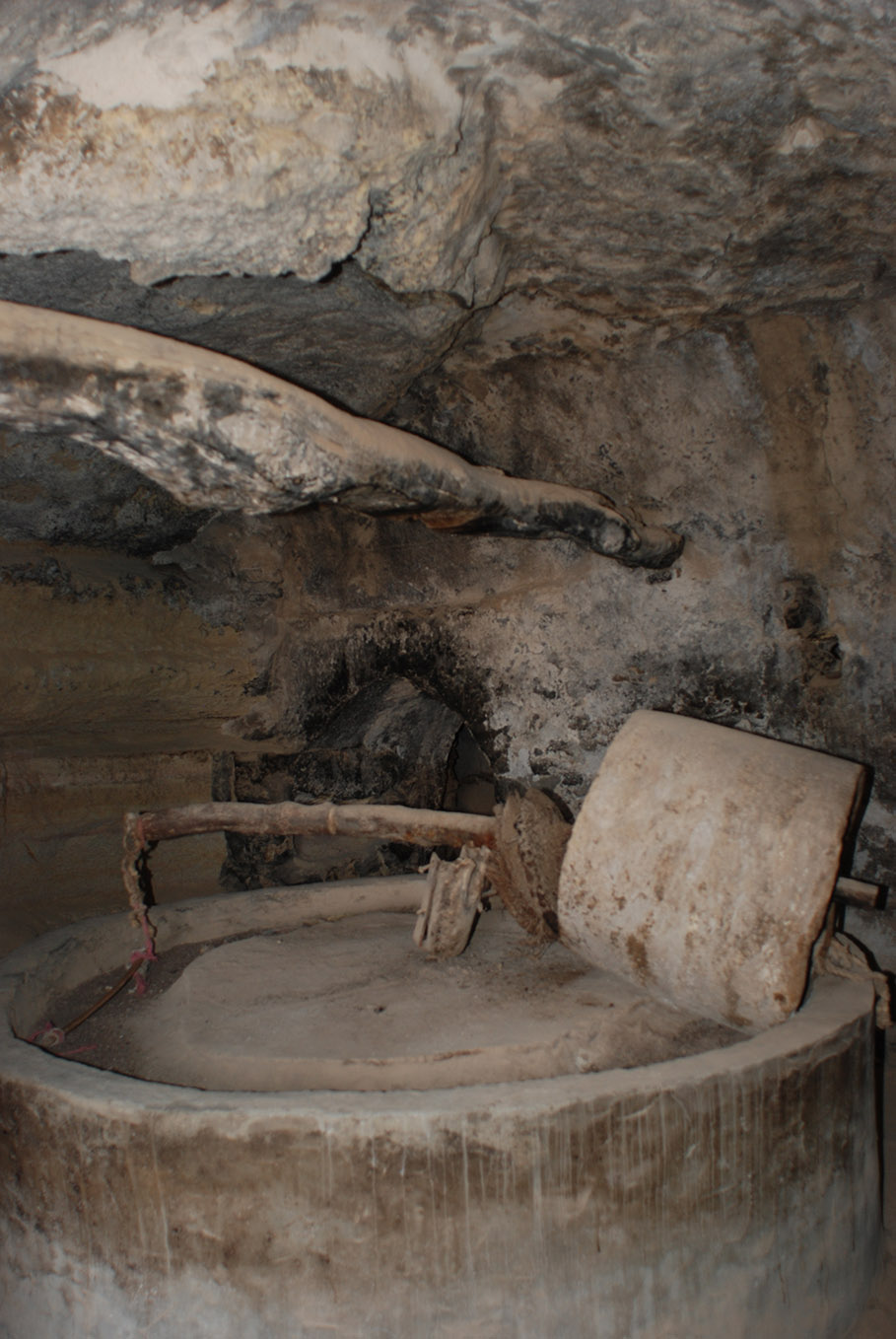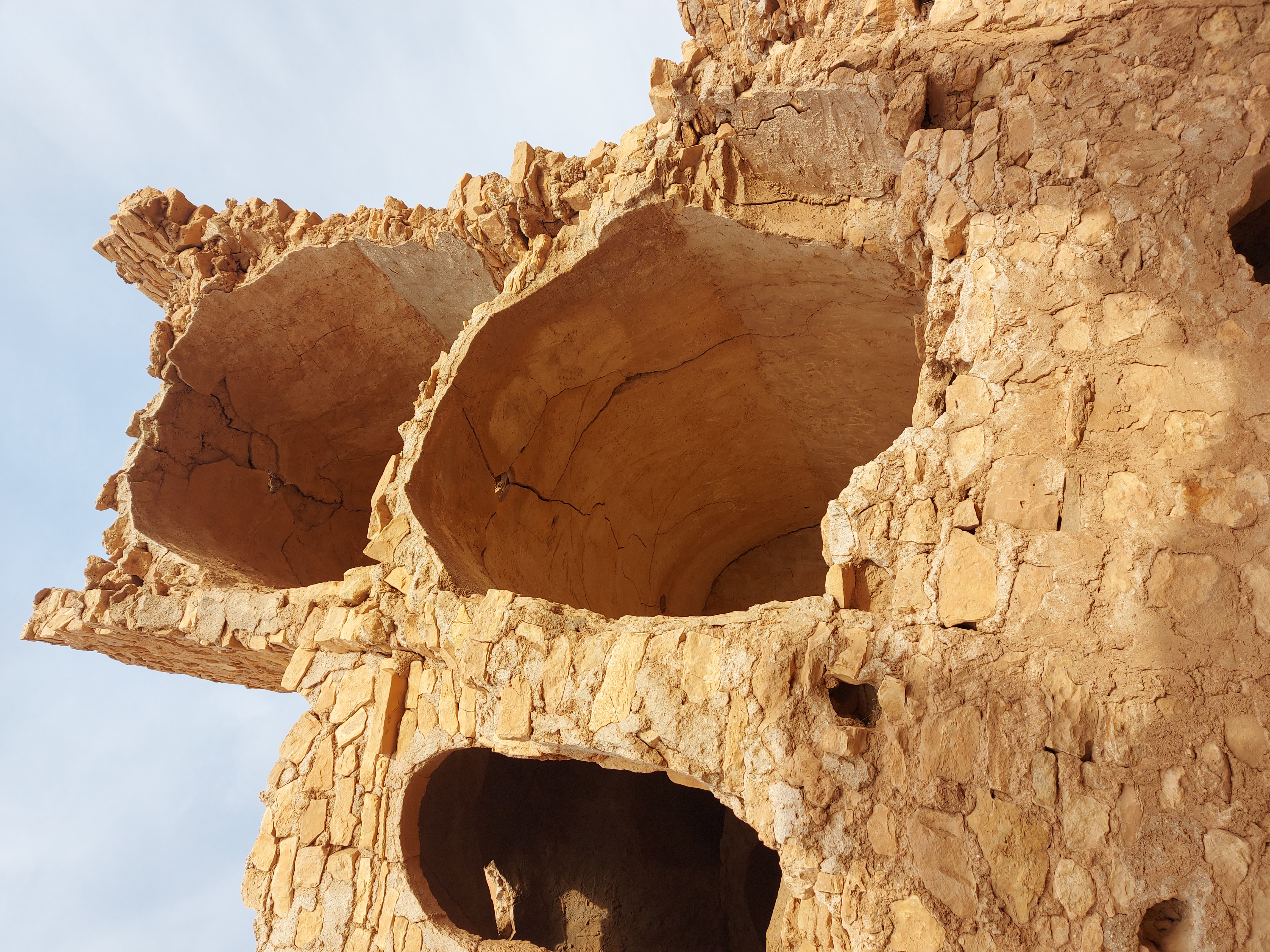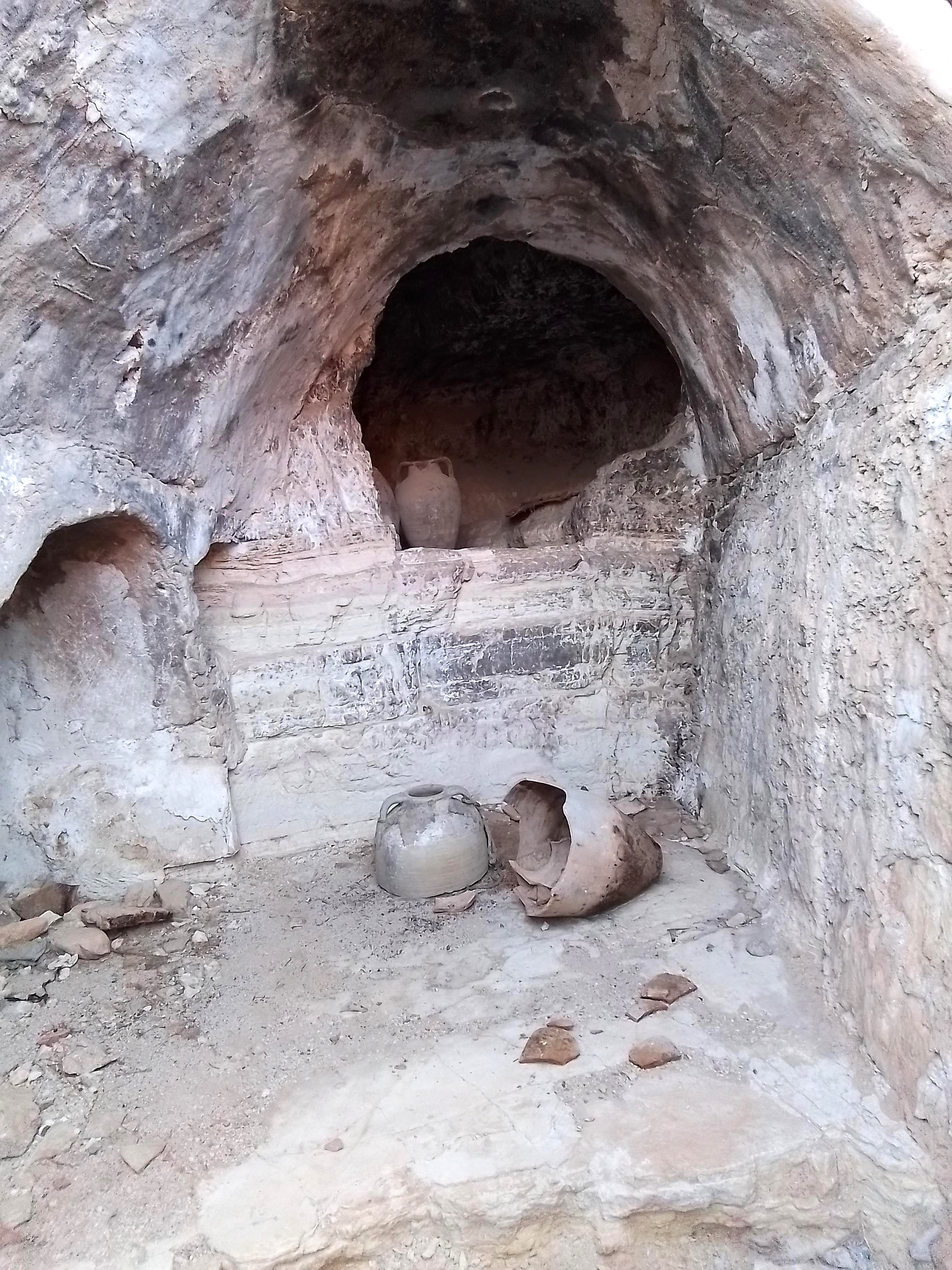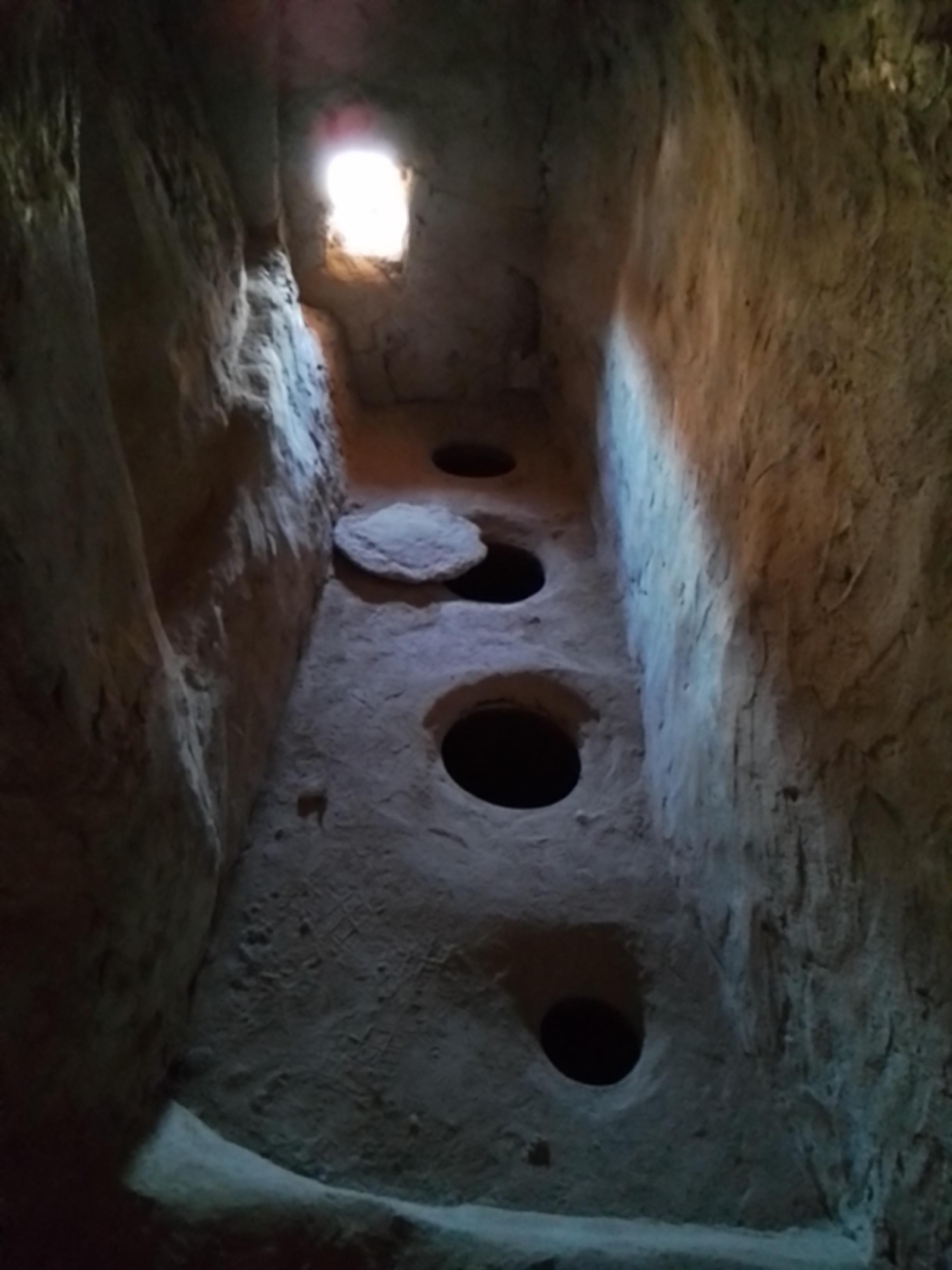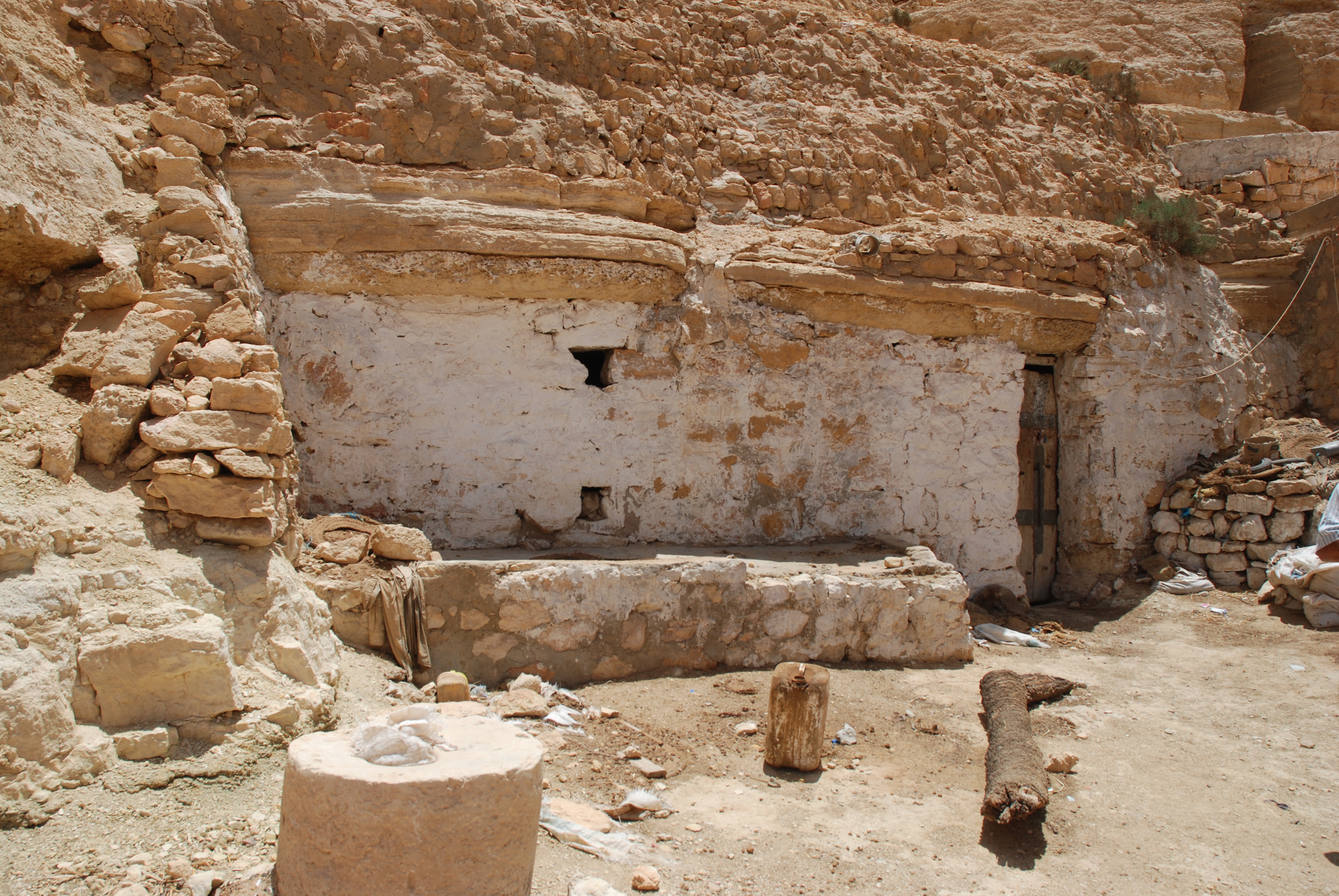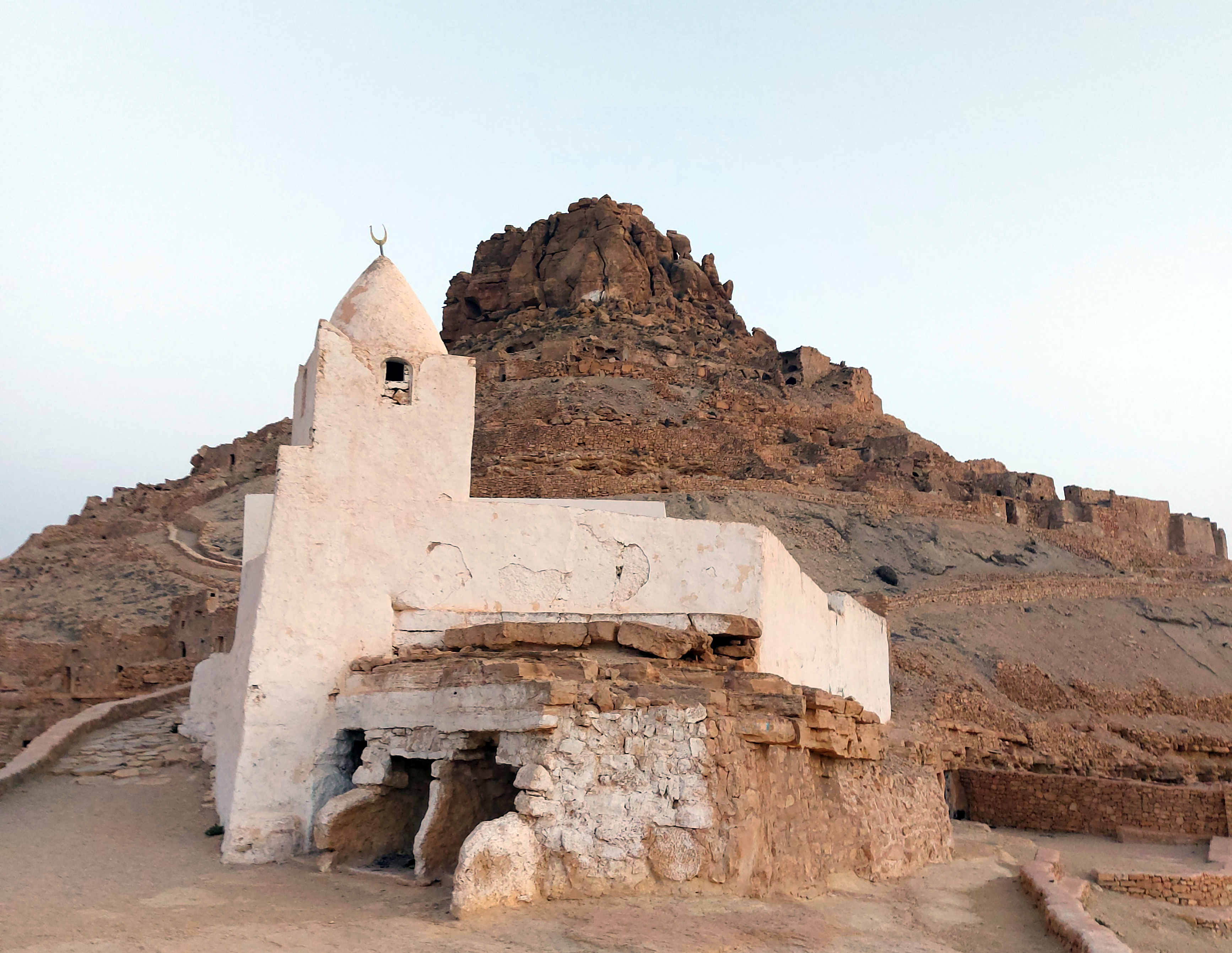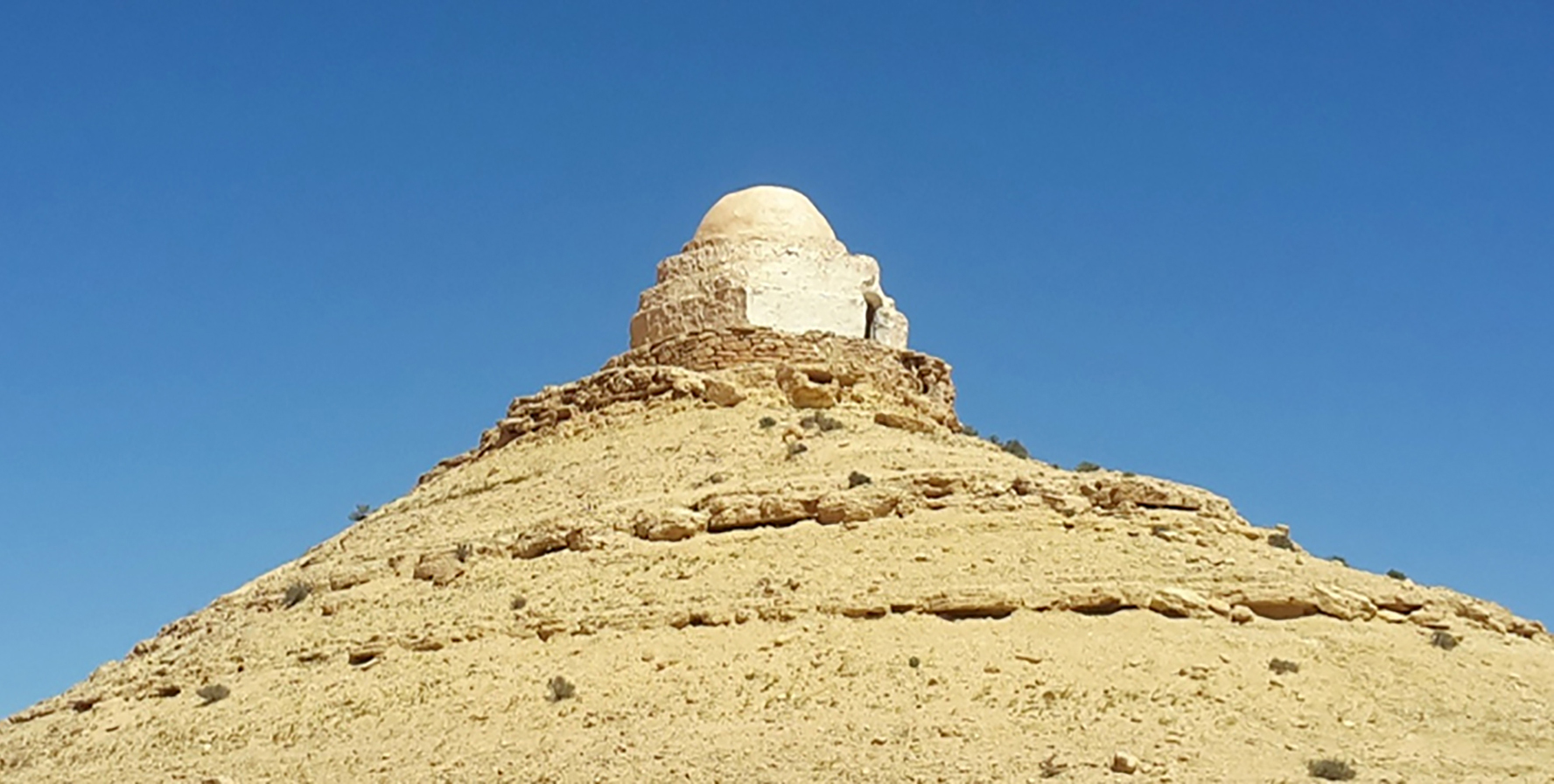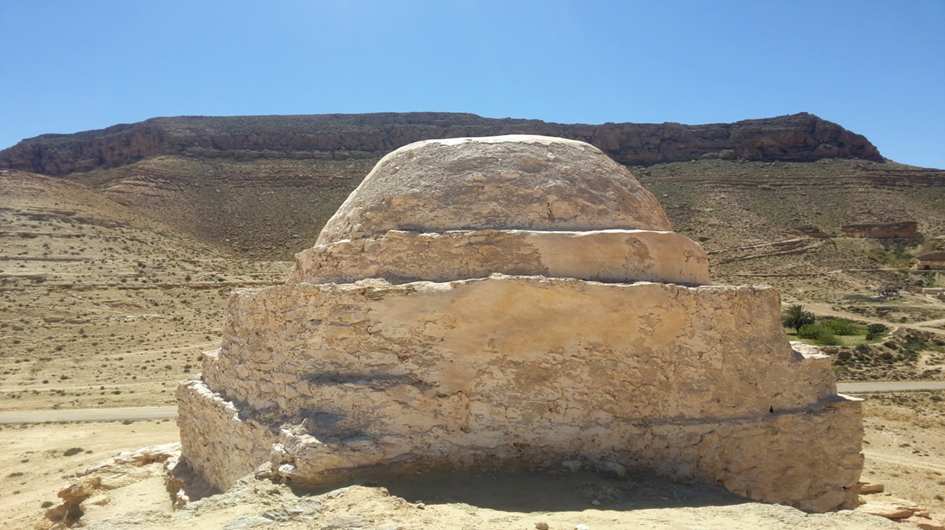TROGLODYTE HOUSES
A troglodyte dwelling takes advantage of the thermoregulatory properties of the earth to guarantee a milder internal clime when extreme temperatures afflict the external environment, especially in summer. The cuts for the dwellings must adapt to the geology and morphology of the mountain, forced as they are to insinuate themselves beneath the most compact geological layers, normally horizontal and at different heights of a relief. This determines the typical terraced layout in the Amazigh village, with rows of dwellings arranged along paths connected by steep diagonal ramps. The underground houses always have a private space in front, provided of built facilities arranged around a court. In the internal part, the presence of the alcove is almost constant, normally isolated at the bottom of the cavity, while the rest of the room presents features linked to daytime domestic activities such as spinning and weaving.

GSOUR AND GHOURAF
The gsour (sing. gsar or gasr) are fortified collective granaries located in the mountain range extending from the Djebel Matmata in Tunisia to the Djebel Nafusa in Libya. The origin of these buildings is debated among scholars, according to some they even date back to the Arab invasion.The gasr is the solution that the local tribes developed for the storage of food supplies (cereals, oil, dates) in a safe place even in periods when the needs of pastoral transhumance forced the departure of its strongest members.
About 150 gsour have been counted in southern Tunisia. They are normally stand-alone buildings (Gsar Zanata, Gsar Ouled Sultan, Gsar Awadid) consisting of storerooms (ghorfa, pl. ghouraf) on several floors around a central open area with an elliptical or square shape. Some hilltop villages like Chenenni reserve the highest and most protected part of the settlement for the storerooms that therefore are arranged along the higher alleys of the village and usually called kala. Finally there are centres like the village of Guermassa where the storerooms are distributed as premises pertaining to individual houses.
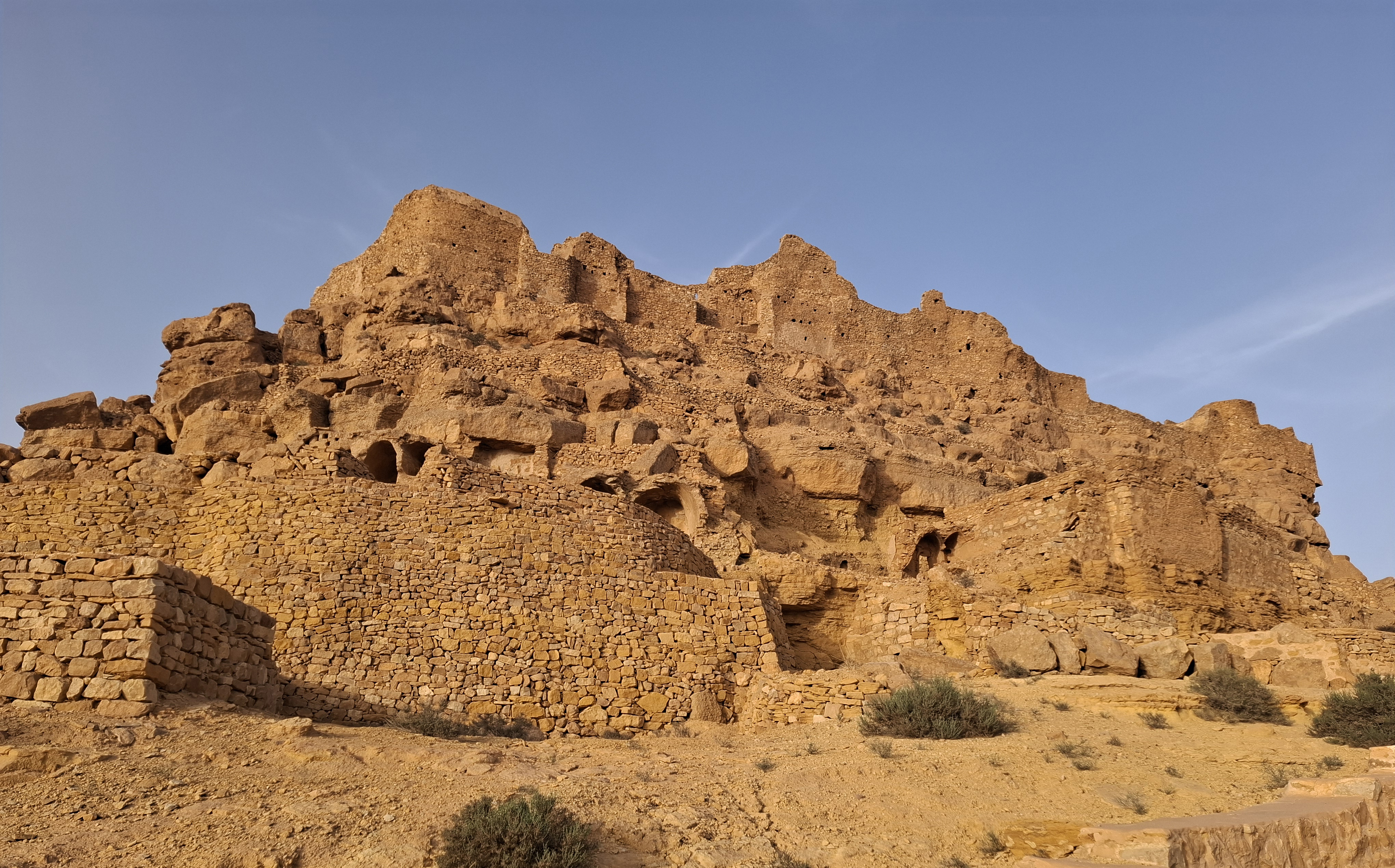
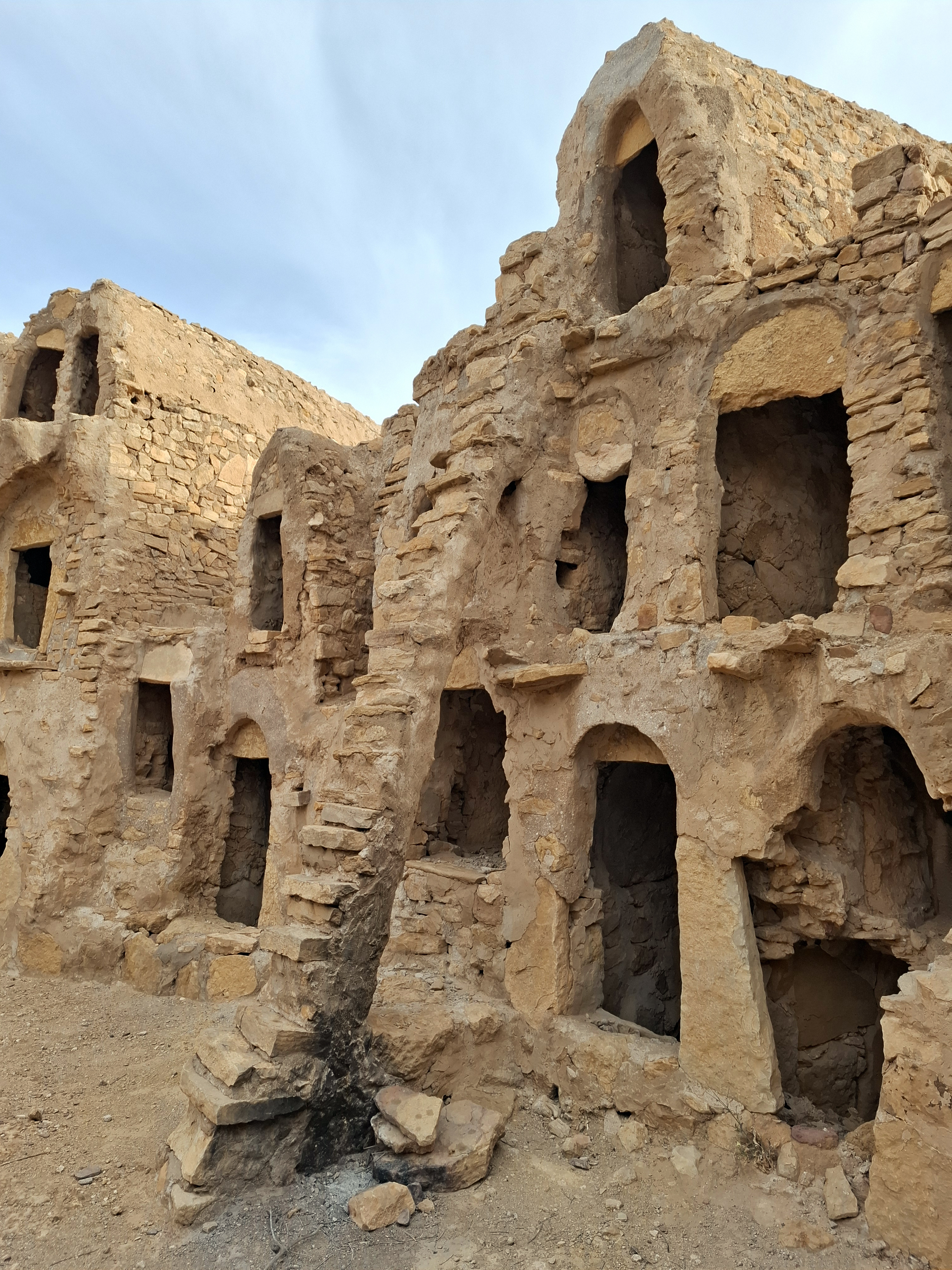
The Ghorfa
The ghorfa is the basic cell, the generating unit of the entire composition.The building is the result of the juxtaposition of these basic vaulted storerooms that fit together in a serial way limited only by the capacity of the lower structures to support the weight of the cells added from time to time above.The side-by-side vaults increase the resistance of the structure through the mutual balance of forces despite the relative simplicity of the masonry technique.When this balance is broken due to any damage that is not immediately repaired, the entire structure is at risk.
In the isolated gsour with a central courtyard there is a single entrance (sguifa) closed by one or two wooden gates and controlled by the guardian who lives in the gasr. The arrangement of the storerooms around the courtyard reflects the history of the members of the tribe. Often the gsour develop in height with the more or less orderly overlapping of the storerooms, just as it is easy to recognise the partition of originally unitary rooms due to family ramifications that could not be resolved with new cells. The facades of the gsour are animated by stairs to reach the upper cells in projecting stone slabs (roukiba) and by olive tree trunks that support small landings in front of the upper doors or used to lift by ropes the products to be preserved. Inside the cells are divided according to the foodstuffs they have to preserve with dividing walls and mezzanines. Often the large jars for the conservation of the oil are walled in the floor so as to guarantee their robustness and constant temperature.
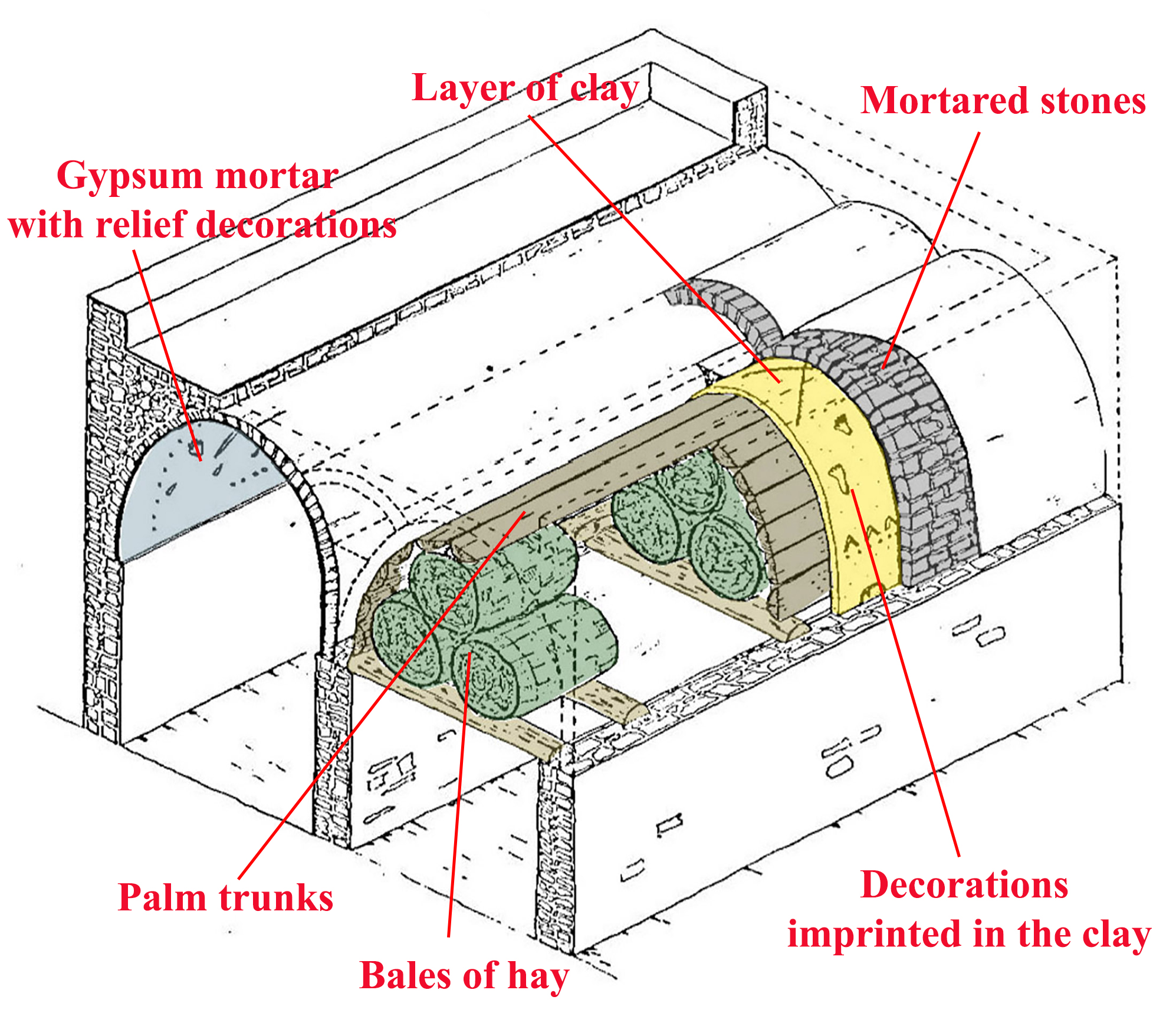
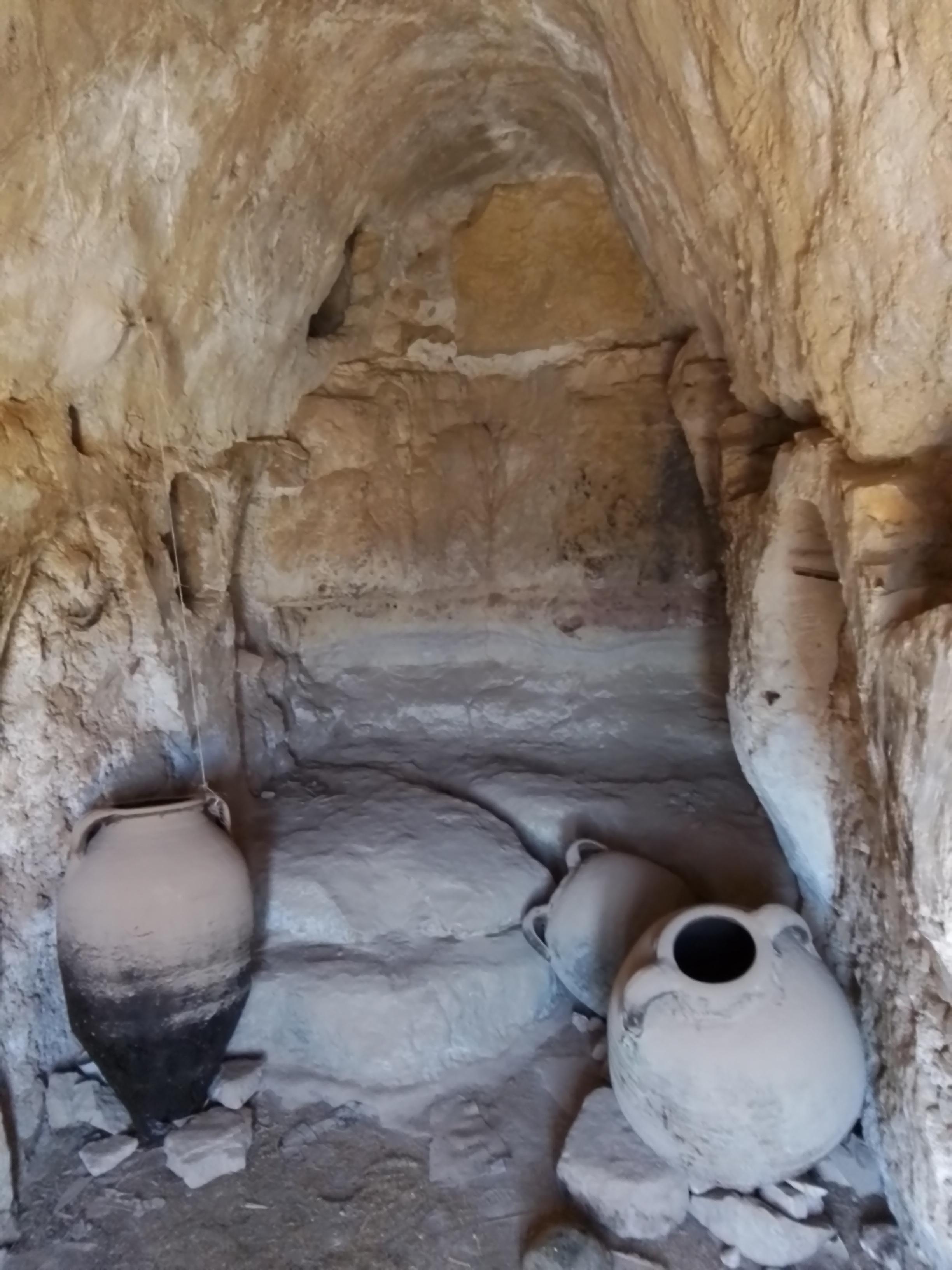
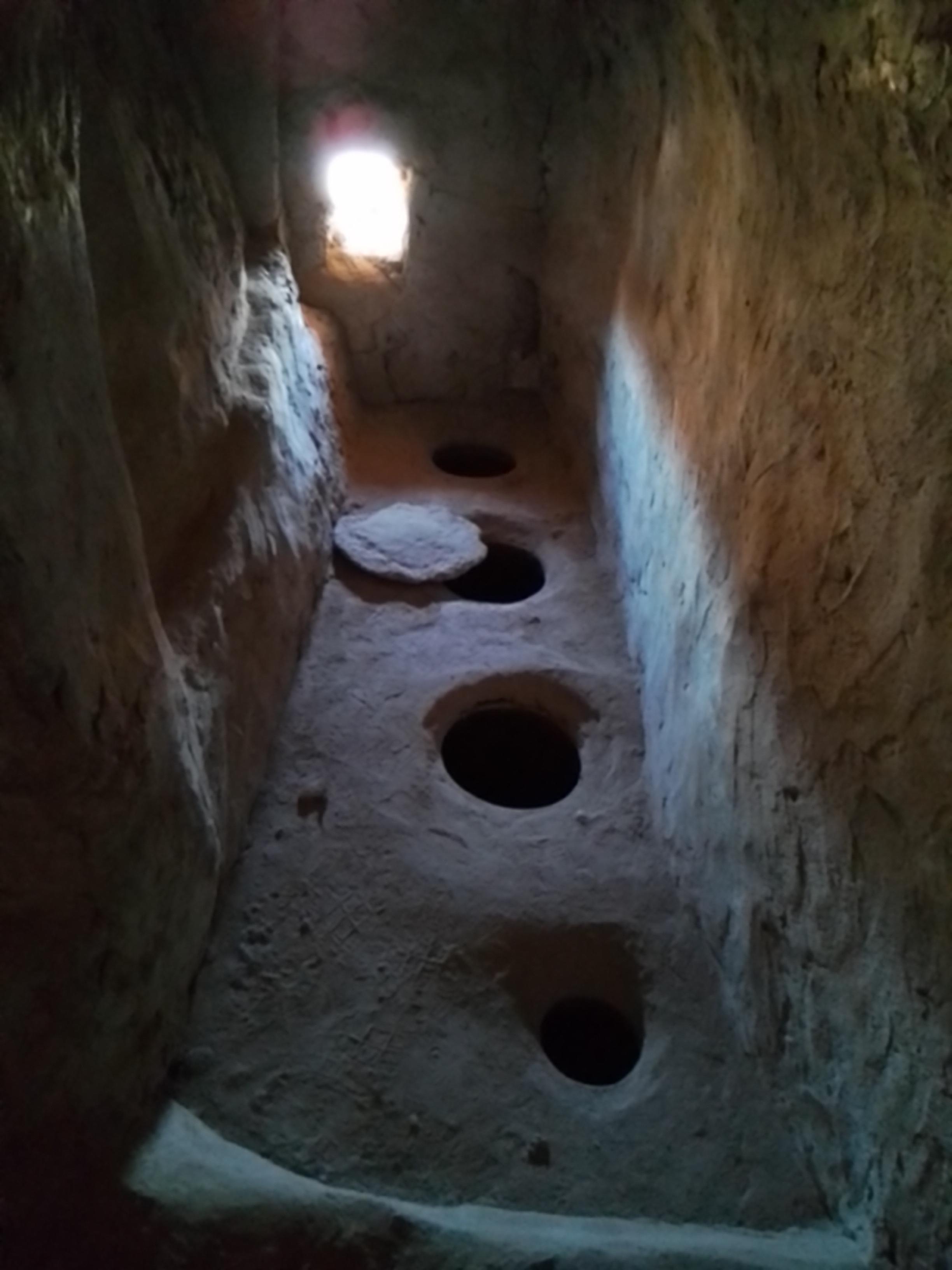
The Vaults
The vaults show how a technical expedient has become a construction tradition that solves the needs of the tribe's transformations and is an enduring medium of its identity.
The vaults are built on a support made with hay or earth, empirically following a profile close to that of a catenary.
The surface of the support is covered with a layer of clayey earth on which geometric decorations, apotropaic symbols and sometimes inscriptions are engraved.
The first casting of chalky mortar is carried out on this bed on which the stones of the vault are laid.
Once the support has been dismantled, the intrados is enriched by relief decorations that amplify the importance, not only symbolic, that this space has for the family group and the entire community.
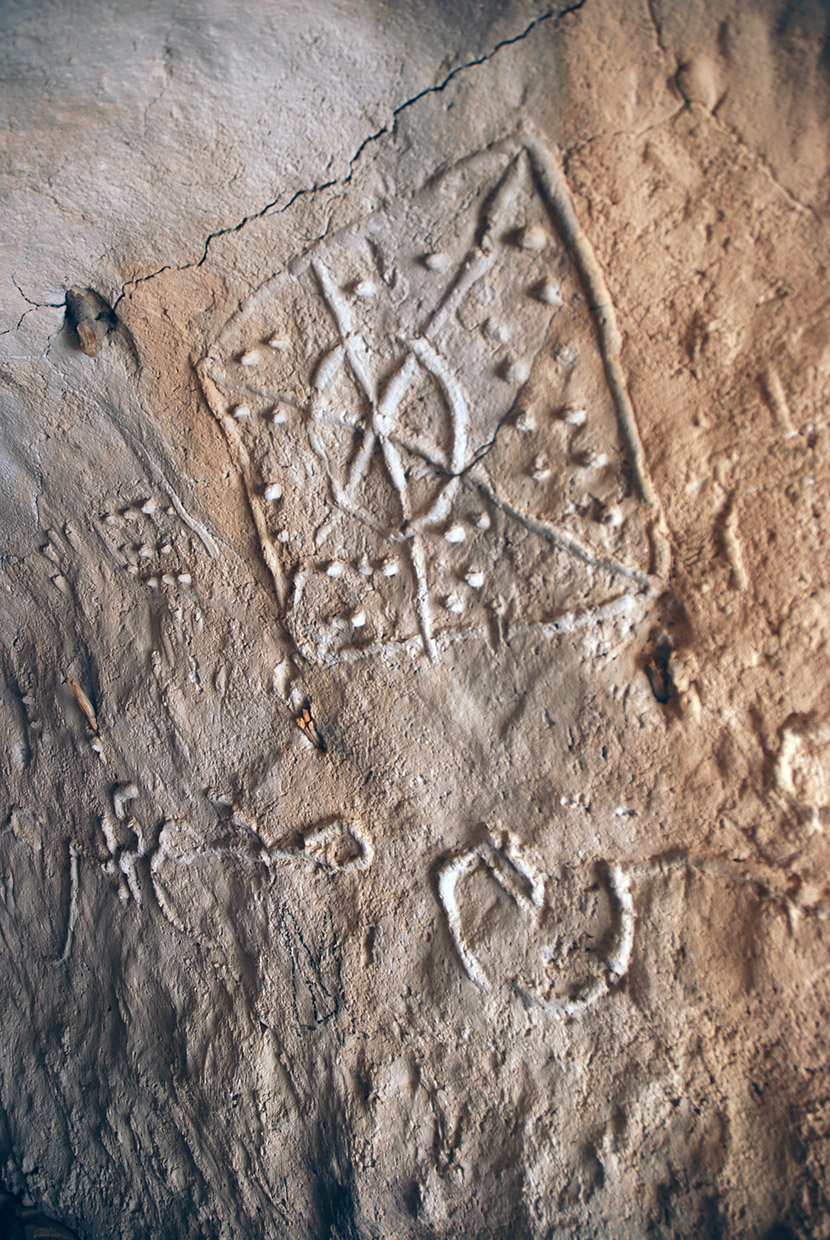

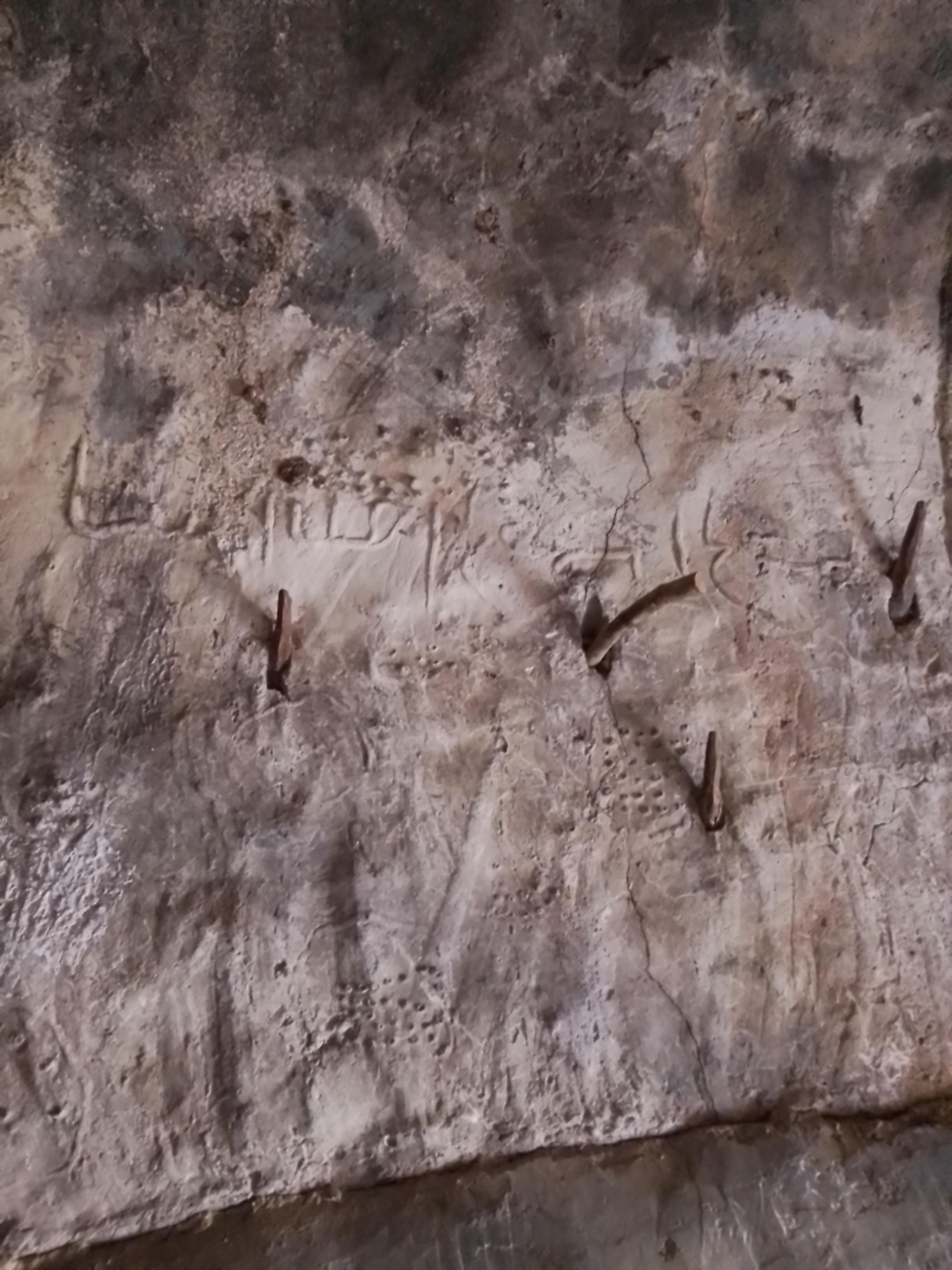
MOSQUES
The Ibadi mosques, entirely covered with the characteristic white plaster, attract the attention of every visitors. They are mostly small buildings with a quadrangular plan, divided inside into two or more naves delimited by arches on pillars or columns. Each nave is covered by vaults, built with the same technique used in gsours, obtaining a relief decoration in the intrados. The mihrab is obtained in the wall of the quiblah projecting from the perimeter of the external walls. The minaret is quadrangular and small. Instead of the minaret, several mosques have a small and particular architectural element, a kind of superimposed turret, called suma.
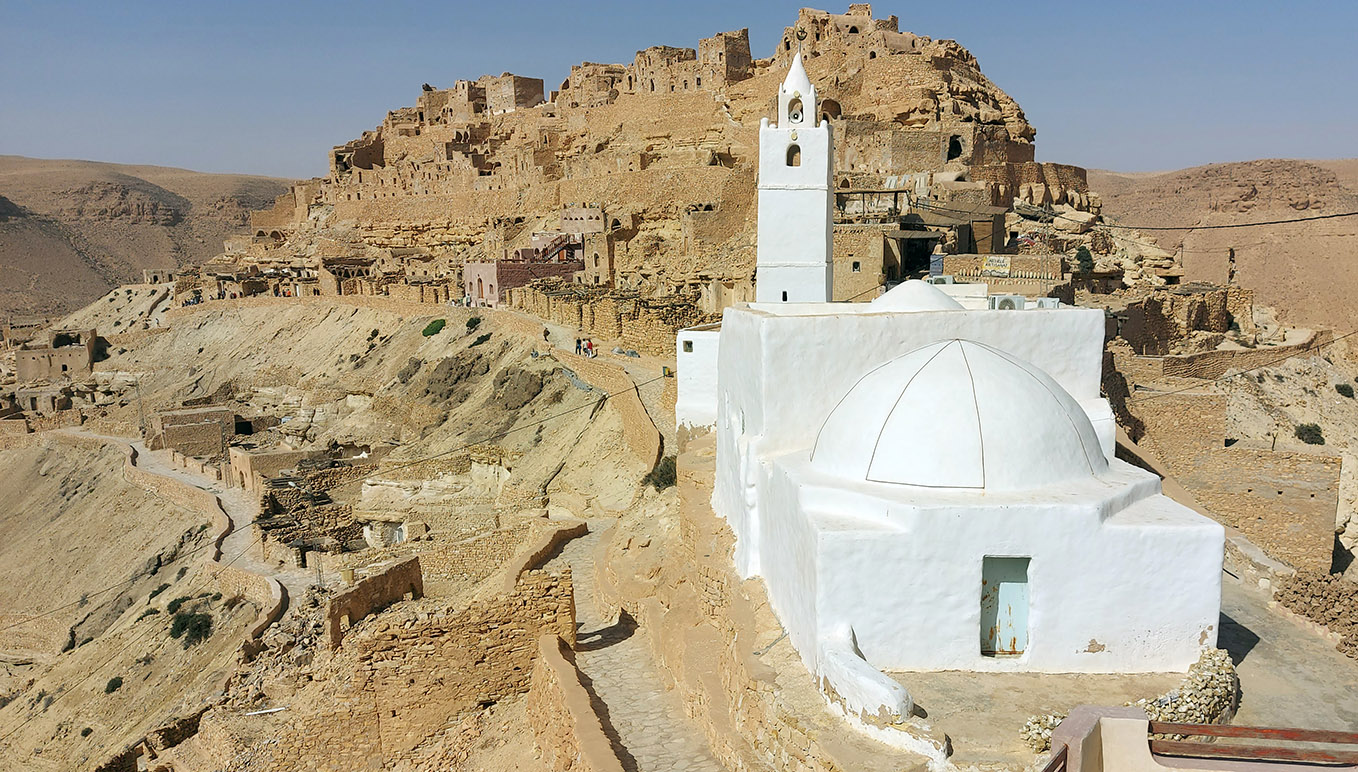
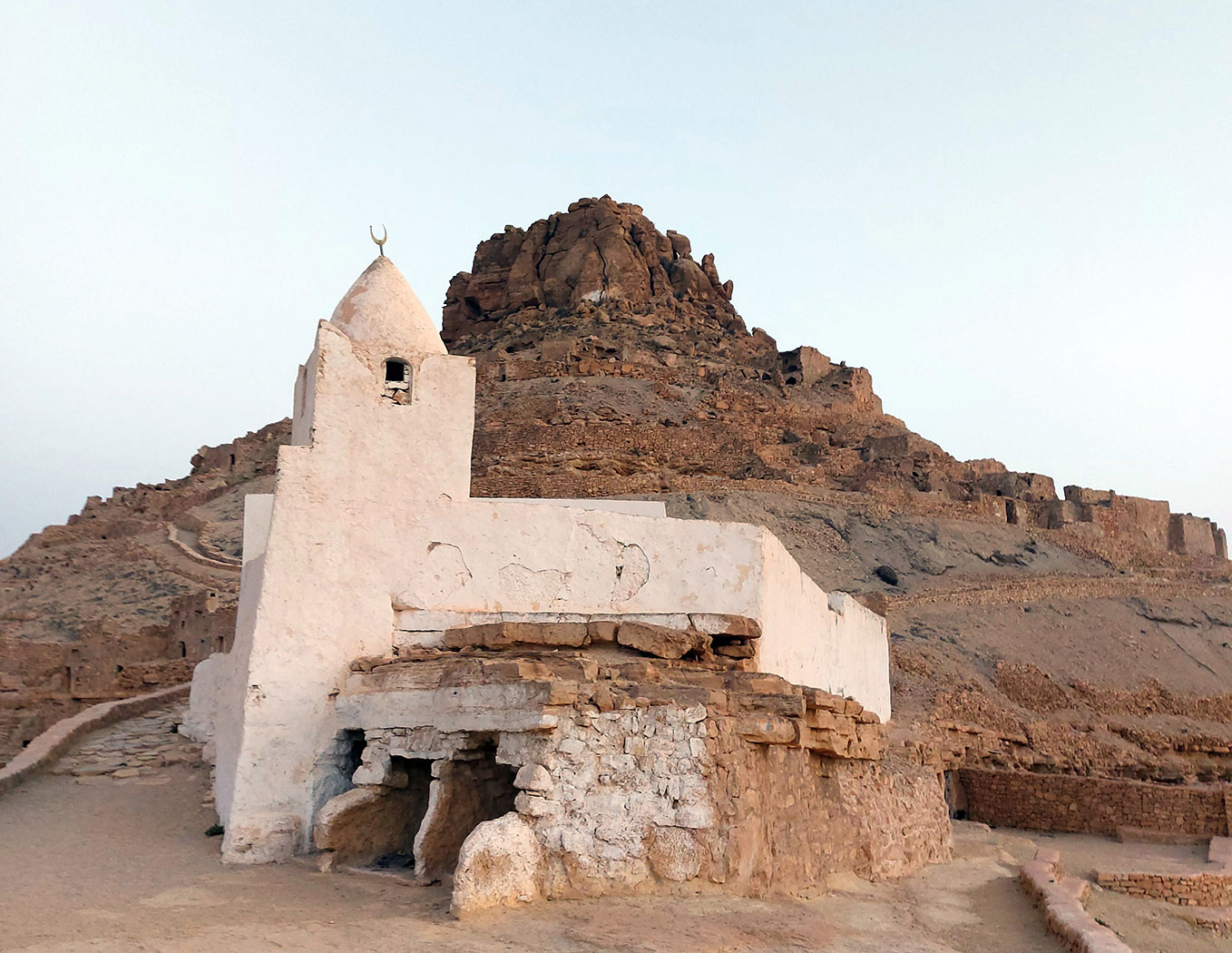
Marabouts
Another architectural landmark of the landscape of the Djebel are the tombs of Sufi Muslim leaders, the venerated “marabouts”, themselves called marabouts.They are very simple structures, mostly small quadrangular pavilions covered by a hemispherical dome, usually isolated on top of hills or other well detectable places.Like mosques, the marabouts are cared for and periodically plastered, thus contributing to their visibility in the landscape.

OIL MILLS
Oil mills, whether carved into troglodyte caves like dwellings or built within granaries, are essential landmarks in village topography due to their economic significance. All the oil mills are equipped with one or more millstones to crush the olives and one or more presses to extract the oil from the pomace. The millstones have collection bases 2-3 meters in diameter and their grinding system is made with hard olive branches that allow a blindfolded dromedary to rotate a heavy millstone cut in limestone. Only the larger villages had more than one oil mill, mostly located in different parts of the village and always out of the gasr. The olive pressing service was paid in percentages of the product separately to the owner of the mill and of the animal. The presses used long palm trunks for the lever moved with ropes applied to a system of pulleys. Today almost all of them are in disuse, but when you enter one of these mills, you can still smell the oil soaked in these premises.
